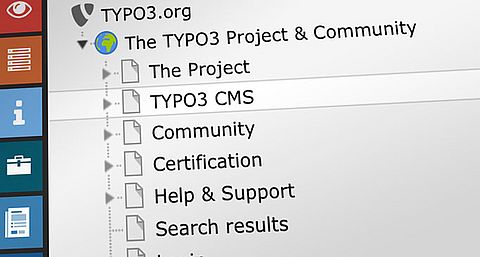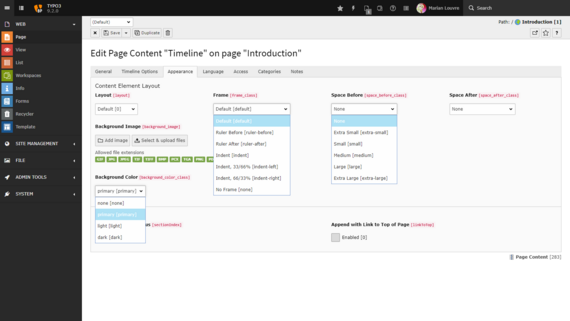Introduced in version 9.2
The well-known “TYPO3 Admin Panel” provides a deeper insight into the internal processes of TYPO3 at run-time. Once activated, TYPO3 integrators and site administrators can access performance and cache statistics, settings of a specific page, etc. They can also simulate certain frontend access situations. It is for example possible to impersonate a specific user group or simulate a timestamp, which may have an impact what is shown in the frontend.
Do not worry - we have not removed this awesome feature from TYPO3, but the Admin Panel will receive a major overhaul to be state-of-the-art again. As the first step, it was moved from the core into a dedicated system extension, which allows integrators to activate and deactivate the feature easily as required. This step also builds the foundation for further improvements such as a modern re-design and more new functions. Better profiling capabilities and the option to add custom functions via an API are just two enhancements on our list.
Do not be shy and get involved if you have a great idea or if you want to contribute in any way to support this initiative.
Please note that the (new) Admin Panel needs to be activated in the Extension Manager once you have updated an existing TYPO3 instance to version 9.2.
Another new feature that TYPO3 integrators and developers alike will embrace is the fact that values of fields are displayed in the backend. The labels of dropdown box items often do not clearly represent the values that get written into the database. A good example are CSS class names: when editors can choose from a list of options in a dropdown box, the labels could be “Ruler Before” or “Indent, 33%/66%”. These are not the values that get stored in the database of course, but “ruler-before” or “indent-left” are.
If the backend debug mode is enabled ([BE][debug] = 1), the real values of fields are displayed in square brackets to backend users with administrator privileges. This enhances the recently introduced feature of showing field names even further.
Documentation





